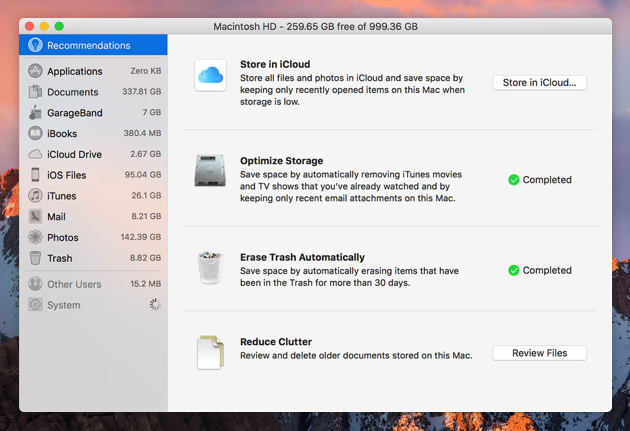Hi All. This blog is combining two new recent themes I've been using; Customer Requests and Proxies!
Tune Sweeper is a powerful tool for cleaning your iTunes library. It makes finding and removing duplicate tracks from your iTunes library a breeze. More than just a duplicates finder, Tune Sweeper is your all-in-one iTunes cleaning App. Tune Sweeper can also be used to download missing track information and artwork to your tracks. Tune Sweeper can also be used to identify and remove tracks that are listed in iTunes but are no longer on your Mac. These are tracks that display an exclamation mark when attempting to play them in iTunes. Tune Sweeper can even be used to scan your Mac for tracks that are not in iTunes and then add them all to iTunes with just a single click. Mika 'Sweeper' Spin — street sweeper fun game for kids Mac OS Games. Own Wish Buy Buy. Lansweeper supports scanning of macOS. Scanned Mac data includes disks, network interfaces, memory, model, OS, processor, serial number, software, uptime and more. To scan a Mac computer, do the following: Make sure you meet the Mac scanning requirements. Clean up the streets like they were meant to be swept. Midnight or dusk, in big cities and isolated boroughs, the Street Sweeper vacuums on. It's you versus yesterday's filth - and the clock! - in this single-player procedurally generated arcade experience.
This time, I had a customer who wished to rollout a new NetSweeper proxy solution. In order to avoid the multiple proxy authentication popups, but still allow user level filtering and, more importantly, logging, a local Agent (called the 'WAgent') needed to be installed and configured. To help wit this problem I wrote this blog to give you a guide on deploying and managing NetSweeper Mac WAgent
The ingredient list
So, what do we need for this? Summer party mac os.
- The proxy server address configured on the client devices.
- This is to force the clients to actually use the proxy, rather than bypass it.
- The proxy server's certificate installed and trusted locally.
- This is to allow the proxy server to inspect SSL traffic. Annoying but required in most / all UK education institutions.
- The WAgent installed locally.
- To be used to identify the logged in user to the proxy solution, as detailed above.
- The WAgent configured correctly
- So it knows which server it should be passing the information the WAgent collects to.
Right, lets start working the list!
Working the list: Proxy server address
Well, remember my last post on using a profile to configure proxies? Boom, done!

Don't like the profile method, how about scripted?
Moving on!
Working the list: Proxy server certificate
Another nice easy one. Simply grab the Proxy server's certificate that you need to deploy, and utilise the 'Certificates' payload in a profile to push it out.
This profile will deploy the certificate to the client devices' keychain, and set the trust settings to ‘always trust'. This will ensure that the certificate is trusted at a system level for all users.
Moving on!
Working the list: WAgent tool
Now this is where things get fun complicated (ok, sometimes my definition of fun is weird).
The installer my customer was provided is a .app installer
Before you get the pitch forks out, there is an arguably valid reason.
The installer helps configure the locally installed WAgent with the settings it needs to work. Unfortunately this same ‘good intention' means we can't deploy the Agent using the provided installer.
(Don't worry, I'll come back to configuring it in the next section)
What I did find is, if you right click and hit 'Show Package Contents' on this 'WAgent Configurator', and go to 'Contents' -> 'Resources' you get a regular looking .mpkg file!
More importantly, this can then be deployed using your weapon deployment tool of choice. I'd suggest if you're using something like Casper or DeployStudio, stick this installer on as a 'At Reboot' or 'Postponed' installation.
Moving On!
Working the list: WAgent Settings
Ooo, so close now, just one item left, configuring the WAgent properly!
After some digging and testing, I found that the settings the WAgent Configurator.app sets are of the standard .plist variety and stored in /Library/Preferences/con.netsweeper.WAgent-Configurator.plist.
More importantly, these settings can be managed through the use of everyone's favourite, Configuration Profiles (Woo! Go NetSweeper Devs!)
WAgent Settings: How should I do it?
Well, I think you've got two choices: https://smartphonesoftware.mystrikingly.com/blog/pengu-mac-os.
- Pick a ‘packaging' Mac, install the WAgent and run the configurator app to set it up.
- Test this and make sure it all works.
- Then use Tim Sutton's MCXToProfile to convert the plist at /Library/Preferences/con.netsweeper.WAgent-Configurator.plist to a configuration profile.
- Deploy this as you wish (Munki, Casper, local install, other MDM of choice etc).
- Grab a copy of the profile I've used from GitHub here.
- Change lines 20 and 24 to the address of your NetSweeper box
- Change lines 22 and 28 to the port of your NetSweeper box
- Deploy this as you wish (Munki, Casper, local install, other MDM of choice etc).
Job done.
Summary
There you go, hopefully that'll give other Mac Admins using NetSweeper a heads up on how to deploy their Mac Agent. As always, if you have any questions, queries or comments, let us know below and I'll try to respond to and delve into as many as I can.
The usual Disclaimer:
Mac Os Versions
Wild wolf slots. While the author has taken care to provide our readers with accurate information, please use your discretion before acting upon information based on the blog post. Amsys will not compensate you in any way whatsoever if you ever happen to suffer a loss/inconvenience/damage because of/while making use of information in this blog. All walls must fall (itch) mac os.

